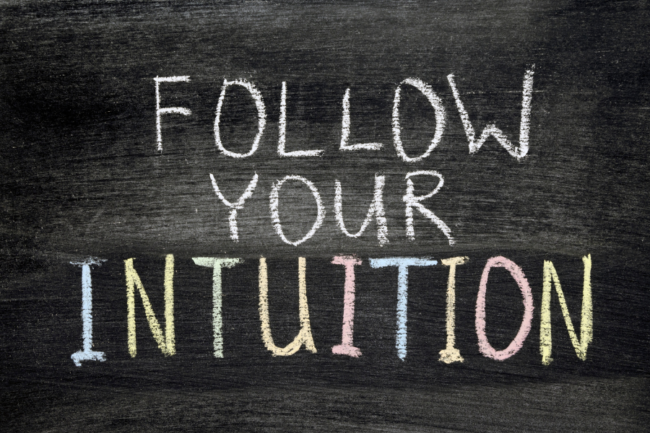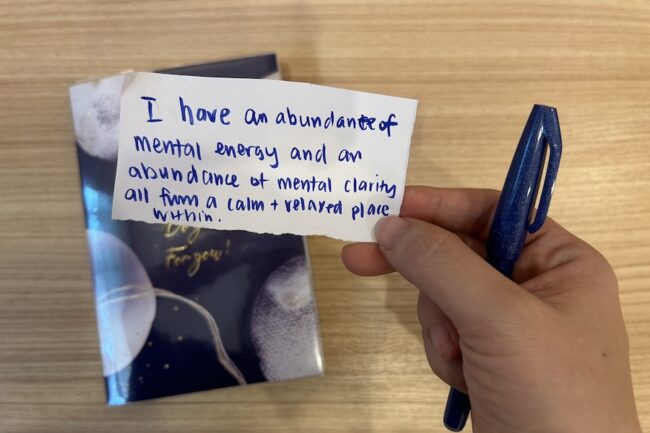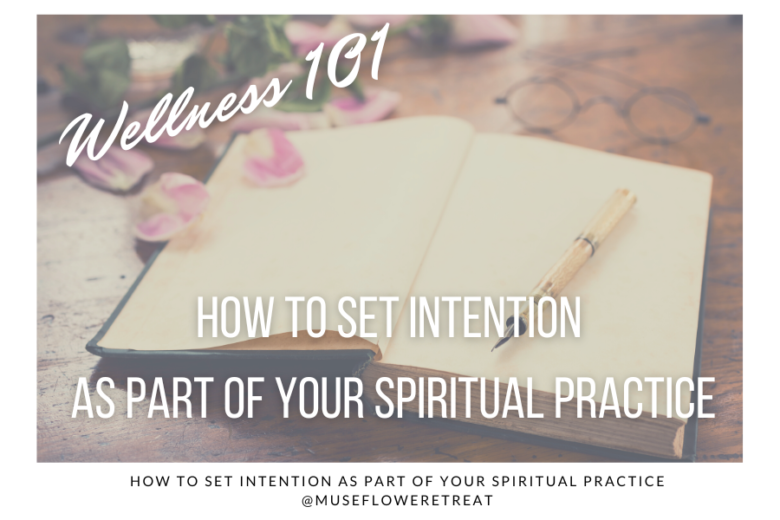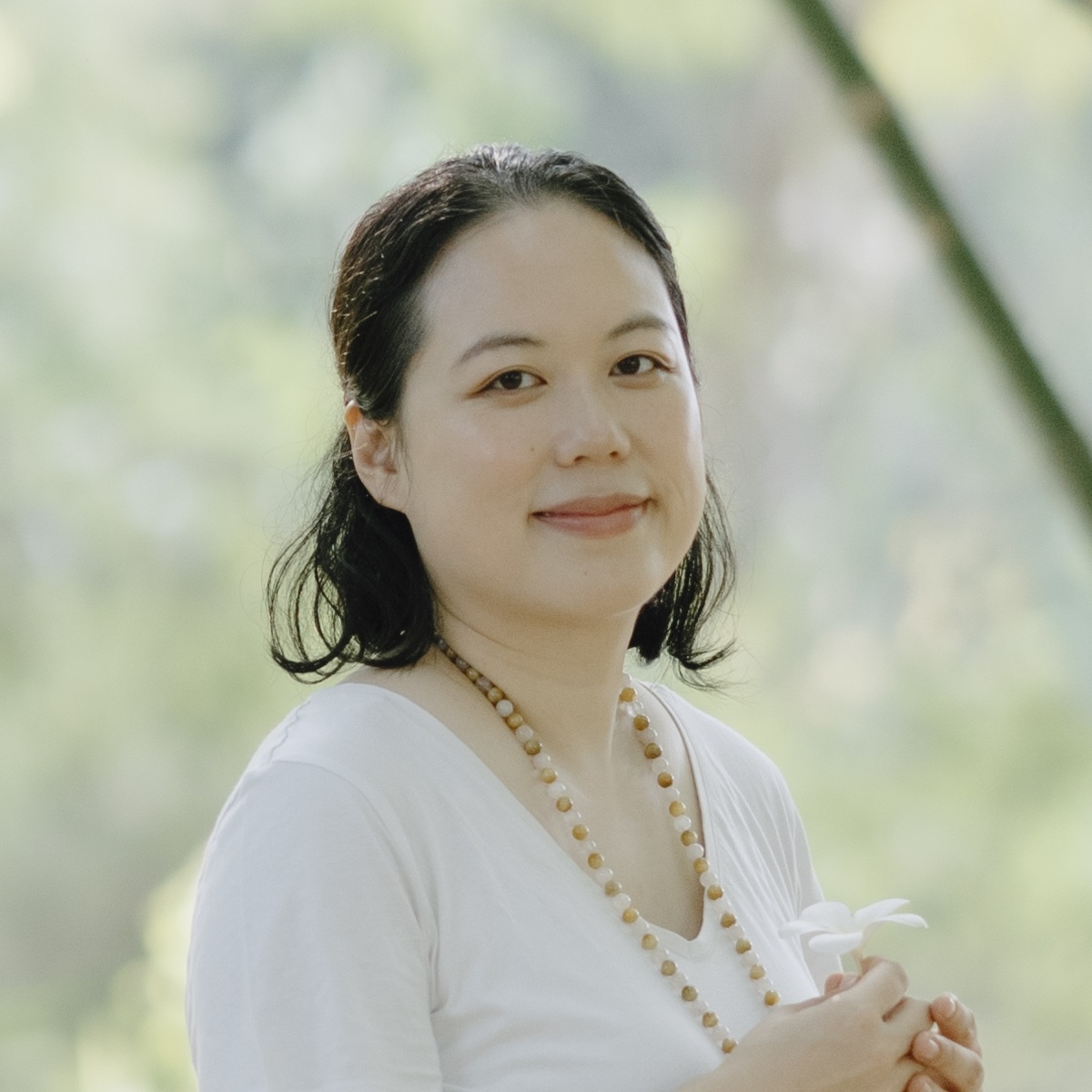Setting intention has become an important part of my spiritual practice and life. I always set an intention on a daily basis before my meditation, an intention throughout the lunar cycle, an intention for the year, an intention for every group retreat I facilitate, and an intention for any new projects or ideas that want to be birthed into the world.
So what is setting intention? How is it different than setting goals? And why is it such a powerful practice?
What is setting intention?
An intention is our raison d’etre. It is the “why” behind our choices, behaviors and decisions. When we are aware of our intention, it gives clarity and focus on what we want to create in our lives.
Our intentions, whether we are aware or not, either come from a space of love or a space of fear. Depending on where our intention comes from consciously or subconsciously, it will steer the path of our lives.
As James Redfield, a famous American author, once said, “Where attention goes, energy flows. Where intention goes, energy flows.” So setting intention is how we can set the course of where we want to direct our energy flow to.
To me, setting intention is also a way to come home to ourselves and into our hearts. Our intention can become an anchor for us to return to ourselves again and again when we start to get distracted or lose focus on our path.
An intention is similar to a goal in the sense that it gives us focus on what we want to invite into our lives. However, an intention is much more open-ended, whereas a goal has to be S.M.A.R.T. (specific, measurable, achievable, realistic and timely).
An intention is like an open invitation to co-create with the Universe and it often focuses on how we want to feel instead of what we want to achieve.
When we set an intention, we let go of the expectations of how things should turn out to be, and we trust the Universe will support us no matter what.
So how can we set an intention?
In today’s blog I want to share with you my own tips on how to set an intention. Even though there is no real right or wrong way to do so, these tips are tried and tested in my own life and I hope that these tips can help you get started on incorporating this powerful practice into your daily life.

When I set my intention, I like to focus on my feelings instead of actions. A lot of times we attach certain feelings to certain actions or outcomes. For example, we may think that by doing certain things or achieving a certain goal will make us feel worthy, enough, or validated. But in reality, sometimes these outcomes may or may not bring such feelings.
So I find it best to separate the feelings and the actions/outcomes. Instead of trying to control how the outcome should turn out to be so we can feel a certain way, it is way easier and takes much less effort to focus on the feelings we want to create at the first place.
For example, I want to earn more money. Instead of thinking of how much salary I want to earn every month, I bring the focus back to my feeling. Why is that I want to earn more? Is it because I want to feel more secure and stable or to have more financial freedom to do what I love?
Once I start reflecting on the why of my desires, I can uncover the true feelings that I want to invite into my life.
2. Let go of the how and just focus on the what
Now we know what feelings we want to create (the what), we don’t need to know how we will get there.
The beauty of setting intention is to co-create with the Universe. We focus on the what, and the Universe will show us how we will get there.
Back in my other blog I shared how the practice of Bhakti Yoga overcame my disappointment and how I came to write my birth intention instead of my birth plan.
Instead of specifying what kind of support I needed in details, I just told the Universe that I felt supported throughout the pregnancy, the birth and postpartum.
Then what happened completely exceeded my expectations and what my mind could have ever dreamt of. My mom decided to come to Thailand during the pandemic when it was extremely difficult to travel, and she was able to bring two other people to help me and my family. They arrived 2 weeks prior to the birth and we were able to prepare and setup everything we needed for the arrival of my son.
The Universe gave me all the resources and help I needed to support me during that time, and everything I received was more than I could have ever imagined.
This experience has really showed me the power of setting intention and the magic of letting go of the how.

3. Trust the Universe and listen to your intuition
Once the intention is set, we need to learn to let go of the how-we-will-get-there part, and also any attachments of how it should turn out to be.
This is where the trust and faith kick in. We don’t know how everything will turn out, nor can we control every situation, outcome, or events in our lives.
We just have to trust the Universe (or however you’d like to call this bigger presence around us). Know that the Universe has our back, and the Universe always, always gives us what we need.
We also need to listen and pay attention to our intuition. Because that’s how the Universe will show us the baby step and the actions we need to take in order to manifest what we want.
The end result may not turn out to be the way we expect it to be. It may be even better than what we can ever imagine. Or maybe the answer is no – we don’t get what we want.
And when the answer is no, trust that it is for our highest good. In my own experience, I can see that again and again, rejection is the Universe’s way to protect us. Initially we may feel disappointed, but with time when events unfold, we will understand why we didn’t get what we wanted initially.
4. Use present tense and avoid negative words
Similar to writing an affirmation, it is important to set our intention in the present tense as if it’s already happening now.
We also want to avoid using negative words. This way it helps us to refocus on what we want to invite into our lives instead of what we don’t want.
For example, instead of focusing on not wanting to get sick, what is it that you want to have? Is it to stay healthy and strong?
As you set your intention, make sure to use the present tense. For example, instead of “I want to be healthy”, say “I am healthy” or “I feel healthy”.
It is even better if we can get more specific on the feelings, as certain words such as “good” or “healthy”, can be quite general sometimes.
For example, what does feeling healthy mean to you? Is it feeling strong in the body and clear in the mind? Is it feeling energetic and focused when you wake up or throughout the day? The more specific we are with our feelings, the easier it is to imagine embodying these feelings in the now.

5. Write / draw your intention down and place it somewhere that you can see as a daily reminder
You know the saying “out of sight, out of mind”. I don’t do it for my daily intention in my meditation practice, but I do write down my intention for the lunar cycle and the year and place them on my altar. This way, they serve as a visual reminder for me of what I am inviting into my life.
Another beautiful way to express our intention is through visual art. I love to create vision mandalas, which is a collage of pictures I feel drawn to that I collected from old magazines. You can also draw or paint your intention, or choose an object to visually symbolize your intention and place it somewhere in your home that you can see regularly.
For some people who share a home with others and want to keep their intention private, you can be creative on how you connect with your intention. Maybe you stick your written intention in the inside of your closet door. Maybe you choose an object that is a symbolic representation of your intention and place it on your bedside table or underneath your pillow.
6. Release your intention once you have received what you want
Once we have received what we have intended, it is time to release the intention. The act of releasing doesn’t mean that we don’t need these feelings anymore, rather the act of releasing is releasing the attachment to our intention.
We know that whatever we have intended to invite into our lives are already here within us. Once we remember that, we won’t need the visual reminder anymore.
Or perhaps the intention is set for a specific time frame or project. Once the time period has passed or the project completed, then it is time to move on to a new intention.
Personally I like to burn my intention in a fire release ceremony. If you do so, make sure to find a heat-resistant bowl and that you have created a safe environment to burn the piece of paper responsibly.
Other ways to release the intention if it is written on a piece of paper is to tear it up and thankfully offer to the earth (or to the trash can). If you can find water-soluable paper, you can also write your intention there and release the paper in water.
If you have drawn your intention as a picture or a vision mandala, you can thank it, mentally release the intention, and safely keep it in your files.

Try it Out
If you want to try out setting intention, start simple. A really good prompt to ask yourself is how do you want to feel first thing in the morning?
Once you identify how you want to feel, for example, if you want to feel energized, as you write down your intention just take away the word “want” and write it in present tense as such: “I feel energized”, or “I feel energized when I wake up”.
Same as writing affirmations, it is important to feel 100% on board with it. A good way to test it out is to read your intention out loud to yourself. if you feel a 100% yes in your body, then you know it is the right intention for you. If it doesn’t feel 100%, make adjustments until it rings true to your ears.
Using the same example, if “I feel energized when I wake up” feels a bit scary, perhaps adding the word “It is safe for me to feel energized”, or “I feel safe and energized” may help.
Conclusion
Setting intention has been such an important daily ritual to me and I have seen beautiful results from incorporate this simple practice in my life.
Setting intention is like planting a seed. The only thing we need to be clear on is what kind of seed we want to plant – and to me, it means to get clear on how we want to feel. The feeling serves as the main focus and the life force energy that the seed needs to grow. The Universe will then provide all the resources for the seed to grow, all we need to do is to hold space and co-create the ideal condition for the seed.
It’s really something simple that you can start anytime, anywhere. At Museflower Retreat & Spa, the practice of setting intention is also shared in our new moon class, mantra and mudra workshop, and it is also a part of our daily practice in our Thailand Bhakti Yoga Study Group program.
I hope the above tips are useful for you. There’s really nothing to lose in setting intention, the worst thing that can happen is that it doesn’t work for you.
So I highly recommend you trying it out, at least for a week and see how things unfold in your life.
Do you have any questions about setting intention or experiences with the power of setting intentions in your life?
Feel free to email me for any questions or sharing, I’d love to hear from you.




